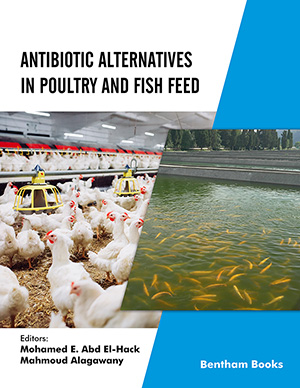Abstract
Background: Ammoides verticillata Briq is an aromatic and medicinal herb that has been widely used in folk medicine for treatment of several types of pathologies such as respiratory problems, colds, fever, headache, gastric disorders and renal infections.
Objective: Essential oils have been subjected of numerous works for their antimicrobial and insecticidal properties which have been valued by hundreds of publications and patents. The main objective of this work was to evaluate the chemical composition, and the in vitro and in vivo antifungal, and insecticidal properties of essential oil of Ammoides verticillata.
Methods: In this work, the air-dried aerial parts of Ammoides verticillata were hydrodistilled in a Clevenger-type apparatus. The essential oil isolated was analyzed using gas chromatography (GC) and mass spectrometry (GC/MS). The in vitro antifungal activity of the essential oil was investigated against four plant fungi using radial growth technique. The effect of the essential oil on disease development of olive caused by Penicillium crustosum and Aspergillus niger in the in vivo conditions. The fumigation test of the essential oil was evaluated against L3 stages, pupas and adults of Bactrocera oleae known as the olive fly.
Results: The essential oil of A. verticillata was characterized mainly by carvacrol (44.3%), limonene (19.3%) and p-cymene (19.2%). The result of in vitro antifungal activity of essential oil showed an interesting antifungal inhibition against Alternaria alternata and Fusarium solani strains with percentage inhibition of 89%. Furthermore, oil of A. verticillata has demonstrated promising in vivo antifungal activity to control infections of olives caused by Aspergillus niger and Penicillium crustosum. In addition, the essential oil exhibited fumigation toxicity against Bactrocera oleae with mortality percentage of 100% at 2 μL/L air.
Conclusion: The results showed that essential oil of A. verticillata has interesting biological activities, which suggests that oil have the potential to be used as biocide to protect olives of pathogenic fungi and pests.
Keywords: Ammoides verticillata, essential oil, biocidal agent, Bactrocera oleae, olive tree, gas chromatography.
[http://dx.doi.org/10.1016/j.ijfoodmicro.2010.08.015] [PMID: 20826038]
[http://dx.doi.org/10.1590/S1519-566X2004000500001]
[http://dx.doi.org/10.1038/nrmicro2968] [PMID: 23411863]
[http://dx.doi.org/10.4236/jwarp.2010.25050]
[PMID: 17934035]
[http://dx.doi.org/10.1016/j.foodcont.2006.05.017]
[http://dx.doi.org/10.1111/j.1365-2672.2011.05033.x] [PMID: 21554568]
[http://dx.doi.org/10.1016/S0378-8741(97)00077-9] [PMID: 9324004]
[http://dx.doi.org/10.1080/10412905.2009.9700133]
[http://dx.doi.org/10.1002/cbdv.201600482] [PMID: 28109063]
[http://dx.doi.org/10.1016/j.ijfoodmicro.2011.01.023] [PMID: 21320730]
[http://dx.doi.org/10.1002/jsfa.3342]
[http://dx.doi.org/10.1080/10412905.2011.9700457]
[http://dx.doi.org/10.1016/j.ecoenv.2013.11.013] [PMID: 24433784]
[http://dx.doi.org/10.1093/jee/18.2.265a]
[http://dx.doi.org/10.1016/j.fct.2010.11.019] [PMID: 21093522]
[http://dx.doi.org/10.1007/s10298-017-1108-1]
[http://dx.doi.org/10.1016/j.jbiosc.2010.06.010] [PMID: 20638331]
[http://dx.doi.org/10.1016/j.ijantimicag.2008.01.028] [PMID: 18440786]
[http://dx.doi.org/10.1016/j.ijfoodmicro.2006.10.015] [PMID: 17141907]
[http://dx.doi.org/10.4489/MYCO.2009.37.3.243] [PMID: 23983542]
[http://dx.doi.org/10.1128/AEM.68.4.1561-1568.2002] [PMID: 11916669]
[http://dx.doi.org/10.1177/1082013213514593] [PMID: 24293188]
[http://dx.doi.org/10.1603/033.046.0315] [PMID: 19496421]
[http://dx.doi.org/10.1023/A:1022388829078]
 14
14 1
1



















